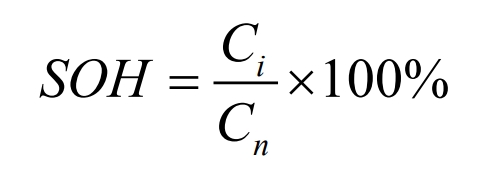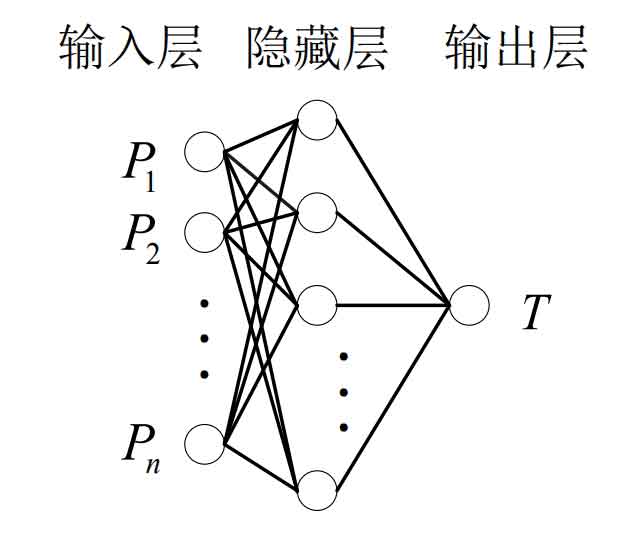The state of health (SOH) of lithium-ion batteries is influenced by the number of battery cycles of charging and discharging. As the number of cycles increases, SOH also decreases, and its relationship is nonlinear but fluctuates negatively. Lithium ion batteries are the foundation of photovoltaic energy storage systems. With the increasingly widespread application of lithium ion batteries, how to accurately predict the SOH of lithium ion batteries to ensure the safe operation of energy storage systems has become a top priority. The traditional BP neural network prediction method for SOH is prone to falling into local optima, the accuracy of the algorithm is difficult to guarantee, and the prediction effect is not ideal. In response to the above issues, this article designs an IMOCS-BP algorithm to predict the SOH value of lithium-ion batteries. This method can solve the problem of traditional BP neural networks being inferior models and falling into local optima. This method can adaptively change the update probability and step size, thereby solving the problems of slow convergence speed and low accuracy of traditional CS algorithms. This method achieves optimization of each node in the BP neural network algorithm. The algorithm proposed in this article was simulated and validated using Matlab software, and the results showed that the IMOCS-BP algorithm can optimize the prediction effect of SOH and achieve high accuracy.
SOH can effectively characterize the degree of battery aging. As the number of charging and discharging cycles of lithium-ion batteries increases, the degree of aging increases, which will affect the battery’s performance. During this process, SOH showed a downward trend. The SOH of the battery cannot be directly measured and can only be estimated using other methods. At the same time, improving the prediction accuracy of SOH is also beneficial for the prediction of SOC. The health status SOH of lithium-ion batteries is usually expressed as a percentage value between 0 and 100%. The mathematical calculation formula for SOH can be obtained using the capacity method:

Among them, Ci in the formula is the current actual maximum available capacity, and Cn is the initial maximum available capacity.
This algorithm is constructed by simulating a human neural network and uses differential transfer to solve the nonlinear mapping problem between neurons. The weights and thresholds in the algorithm are iteratively learned through forward and reverse signal transmission to continuously adjust parameters, achieving optimal results. This can enable the algorithm to adapt to the constantly changing external environment. It adopts a parallel processing structure. The specific topology is shown in the figure.

According to the observation graph, the relationships between neurons can be divided into two types: fully connected and unconnected. Among them, complete connections only exist between neurons in adjacent layers, and no connections only exist between neurons in the same layer. However, fully connected neurons have a unidirectional transmission relationship and there is no feedback of information. Therefore, the BP neural network is a feedforward type. Single layer BP neural networks cannot solve the problem of nonlinearity, but networks with multi-layer hidden layer structures can solve this problem.
With the gradual promotion of photovoltaic technology, lithium-ion batteries, as energy storage devices for photovoltaic power generation and energy storage systems, have been gradually applied in photovoltaic power generation and energy storage systems due to their various advantages. During the working process of lithium-ion batteries, it is necessary to design a battery management system for real-time detection to avoid causing failures in the energy storage system, thereby affecting the normal operation of the entire photovoltaic power generation system. The core indicators of the battery management system in photovoltaic power generation and energy storage systems are SOC and SOH. This article conducts research and analysis on the SOC and SOH of lithium-ion batteries. The main work and research results of this project are as follows:
(1) Study the current research status of photovoltaic power generation and energy storage systems both domestically and internationally, and analyze the advantages and disadvantages of each estimation method, as well as the applicable scenarios, in response to the research status of SOC and health state SOH estimation strategies.
(2) This article introduces the working principle of photovoltaic power generation and energy storage systems, as well as the structure and operating characteristics of lithium-ion batteries. This project selects lithium-ion batteries as the energy storage device for photovoltaic power generation and energy storage systems, and analyzes and compares battery models. Based on the experimental data collected from lithium-ion batteries, a second-order RC equivalent circuit model with high calculation accuracy and short calculation time was selected to achieve OCV-SOC curve fitting and parameter identification.
(3) Designed an MDP model for predicting lithium-ion battery energy storage: based on the second-order RC equivalent circuit model combined with the battery SOC estimation model established by EKF, the Double DQN algorithm was introduced to optimize the model. The Double DQN algorithm adopted effectively solves the problems of dimensionality disaster and overestimation of value functions. Through effective verification of the lithium battery charging state estimation algorithm, simulation results show that DoubleDQN has better convergence, adaptive ability, and estimation accuracy compared to traditional DQN algorithms.
(4) An IMOCS-BP algorithm was designed to predict the SOH value of lithium-ion batteries. It can ensure the convergence speed while ensuring the accuracy of the algorithm, and avoid the instability of the algorithm as the number of iterations increases. Using Matlab software to simulate and verify the BP, MOCS-BP, and IMOCS-BP algorithms mentioned in this article, the results show that the IMOCS-BP algorithm can optimize the prediction effect of SOH and achieve high accuracy. The main innovation points of this paper are as follows:
(1) Using Double DQN to optimize the parameters of EKF, the original SOC estimation method has been improved to solve the problems of dimension disaster and overestimation of value functions in deep reinforcement learning. This improves the estimation performance of SOC, achieving faster adjustment and higher accuracy.
(2) Use the IMOCS-BP algorithm to predict the SOH value of lithium-ion batteries. This method can solve the problem of traditional BP neural networks being inferior models and falling into local optima. This method can adaptively change the update probability and step size, thereby solving the problems of slow convergence speed and low accuracy of traditional CS algorithms. This method achieves optimization of each node in the BP neural network algorithm. Ultimately achieving high-precision prediction of SOH.
This article investigates the application and research status of lithium-ion batteries in photovoltaic energy storage systems. Based on the research and analysis of different estimation algorithms for their SOC and SOH, improvement directions and specific methods are proposed. The simulation results demonstrate that the proposed method has good accuracy, but due to limited time and effort, there is still much room for further research and improvement in the research of photovoltaic energy storage systems. The following improvements are needed:
(1) In battery SOC estimation, battery performance is affected by both objective and self factors, leading to performance degradation. Therefore, the accuracy of battery SOC estimation is influenced by various factors. Different types of batteries are suitable for different models, and constructing different equivalent circuit models can also affect the accuracy and complexity of battery models. In response to this, an equivalent model for lithium-ion batteries with low computational complexity, high accuracy, and high practicality should be further explored in subsequent work.
(2) In battery SOC estimation, although the current EKF estimation SOC model optimized by the Double DQN algorithm can reduce average error and shorten error adjustment time, it did not achieve the expected effect. When fluctuation errors occur in the later stage, the EKF estimation SOC model optimized by the Double DQN algorithm did not show better advantages. Next, adjustments can be made from various aspects such as the selection of measurements, parameters of the Double DQN algorithm, and critical network parameters to achieve better results.
(3) In battery SOH estimation, a data-driven prediction method is adopted to avoid constructing complex battery equivalent circuit models. However, this prediction method has certain limitations and needs to rely on a large amount of experimental data to optimize the prediction model in order to achieve good prediction results. In response to this, further exploration should be made in subsequent work to develop predictive models that can still achieve good predictive results with a small amount of experimental data. In addition, multiple factors that affect battery performance can be considered to be introduced into HI to enhance the prediction accuracy of SOH.
(4) The research objects in this article are all individual lithium-ion batteries in energy storage systems, and in practical applications, the impact of the inconsistency of individual lithium-ion batteries in the battery pack on the performance of the battery pack must be considered. The next step of research can consider the impact of changes in the performance of individual batteries on the overall SOC and SOH estimation of the battery pack. It is necessary to consider the balance control between individual batteries to ensure that the performance of each individual battery remains similar and to ensure the overall service life of the individual battery and battery pack.
